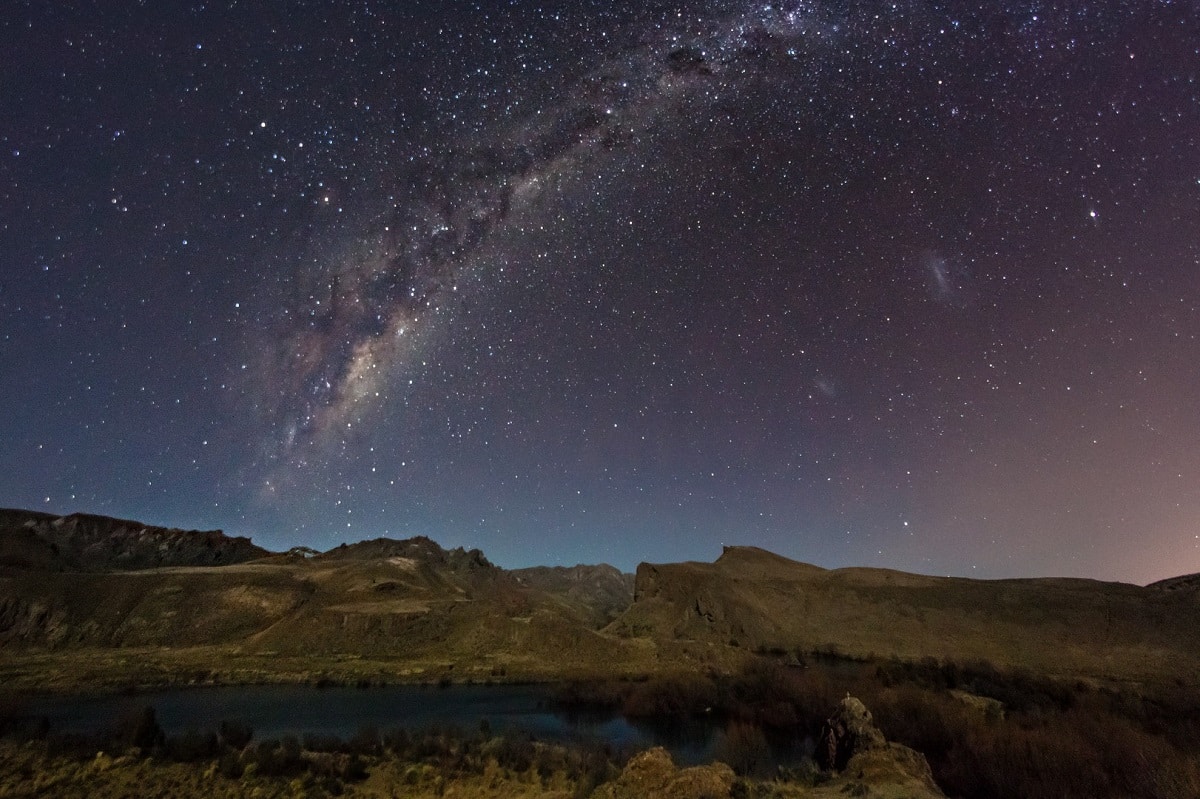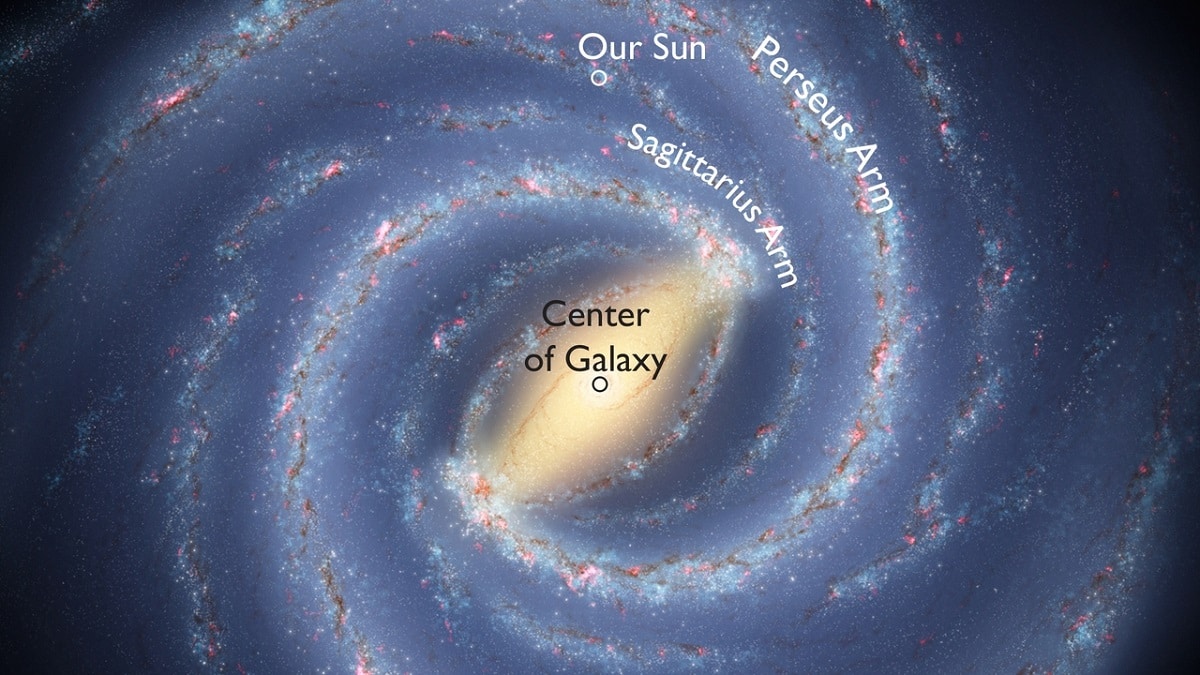
The Milky Way is the galaxy in which our solar system is located, and it is one of the largest galaxies in the observable universe. The arms of the milky way They become very important if we analyze the situation in which our planet is with respect to the rest of the planets.
Therefore, we are going to dedicate this article to tell you about the characteristics and importance of the arms of the Milky Way.
Key features

These are some of the most outstanding features of this impressive cosmic structure.
- Form: The Milky Way is spiral in shape, with a diameter of about 100.000 light years. It is composed of a flat disk with a central bulge, surrounded by a spherical halo of older, less dense stars.
- Stars: The Milky Way is estimated to contain around 100 billion stars, although this number could be even higher. Most of the stars are in the galactic disk, and some of them are part of spiral arms like the Orion arm or the Perseus arm.
- Dark matter: The Milky Way is believed to contain a large amount of dark matter, a mysterious substance that does not emit light or interact with ordinary matter. Although not directly detected, its existence has been inferred from its gravitational effect on stars and visible matter in the galaxy.
- Black Holes: The presence of black holes in the center of the Milky Way has been confirmed, including a supermassive black hole with a mass of about 4 million times the mass of the Sun.
- Gas and Dust Clouds: The Milky Way also contains clouds of interstellar gas and dust, which are the raw materials for the formation of new stars. These clouds can be detected by emitting radiation at different wavelengths, including visible, infrared, and radio light.
- Satellites: The Milky Way has at least 50 satellite galaxies, which are smaller galaxies that orbit it. The largest of these satellite galaxies are the Magellanic Clouds, two dwarf galaxies that are visible to the naked eye from the southern hemisphere.
- Movement: The Milky Way is moving through space at a speed of about 630 km/s, and it is on a collision course with the Andromeda galaxy. Although this collision will not occur for billions of years, eventually the two galaxies will merge to form a new galaxy.
These are just a few of the many fascinating features of the Milky Way, the galaxy in which we live. Studying the Milky Way and other galaxies allows us to better understand the structure of the universe and our own position in it.
Arms of the Milky Way

The Milky Way is shaped like a spiral, which means it has several spiral arms extending from its center. The spiral arms are regions of the galaxy where the density of stars and gas is greater than in other parts of the galaxy. At present, four main arms have been identified in the Milky Way, although the exact structure of the spiral arms is still the subject of scientific study and debate.
The four main arms of the Milky Way are called the Perseus arm, the Sagittarius arm, the Orion arm, and the Norma arm. The Perseus arm and the Sagittarius arm are the largest and most defined arms, while the Orion arm and Norma arm are less defined and more diffuse.
The Perseus Arm is the closest spiral arm to the galactic center, and it extends from the galactic center to a distance of about 10.000 light years. The Sagittarius is the second largest spiral arm, extending from the galactic center to a distance of about 16.000 light-years. The Orion Arm is the third largest spiral arm, extending from the galactic center to a distance of about 20.000 light-years. Finally, the Norma Arm is the spiral arm furthest from the galactic center, extending from the galactic center to a distance of about 20.000 to 25.000 light years.
The spiral arms of the Milky Way are regions of intense star formation, where new stars are born from interstellar gas and dust. Most of the stars in the Milky Way are found in the spiral arms, and many of the most interesting objects in the sky, such as nebulae, star clusters, and massive stars, are found in these regions.
Characteristics of the arms of the Milky Way

They are made up of clouds of interstellar gas and dust that condense to form new, massive stars. As these stars form, they emit large amounts of energy in the form of electromagnetic radiation, such as visible light, infrared radiation, and ultraviolet radiation. this energy it is what makes the spiral arms visible and distinct in the night sky.
The spiral arms also have a great influence on the dynamics of the galaxy. The gas and stars in the spiral arms interact gravitationally with each other, which can cause density waves and disturbances in the distribution of matter in the galaxy. These disturbances can affect star formation in other parts of the galaxy and may influence the general evolution of the Milky Way.
In addition, the spiral arms of the Milky Way are not static structures. The entire galaxy, including the spiral arms, revolves around its center at a constant speed. As the galaxy spins, the spiral arms twist like a corkscrew, creating a spiral shape.
Scientists have used various techniques to study the spiral arms of the Milky Way, including observing individual stars and detecting X-ray and radio emissions from hot gas and massive stars. However, there is still much to learn about the structure and dynamics of spiral arms, and research in this area remains an active topic of research in astronomy.
Importance of living in our galaxy
The Milky Way is the galaxy in which our solar system is located and is therefore the place where we live and experience the universe. Our understanding of the universe and our place in it is profoundly influenced by the Milky Way and its structure and evolution.
In addition, the Milky Way is important because it provides us with a stable and suitable environment for life. Our galaxy contains a large number of stars, many of which are similar to the sun. These stars have planetary systems that could support life, like our own solar system. Additionally, the Milky Way contains regions where new stars and planets are forming, giving us insight into how our own solar system and Earth formed.
The Milky Way is also important for scientific research. Observing and studying our galaxy and its structure, history, and evolution helps us better understand how galaxies formed and evolved in the universe. the milky way too is a key study object in the search for extraterrestrial life, since it is one of the closest and most accessible galaxies for investigation.
I hope that with this information you can learn more about the arms of the Milky Way and its characteristics.